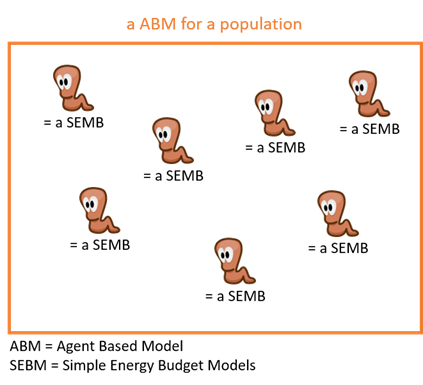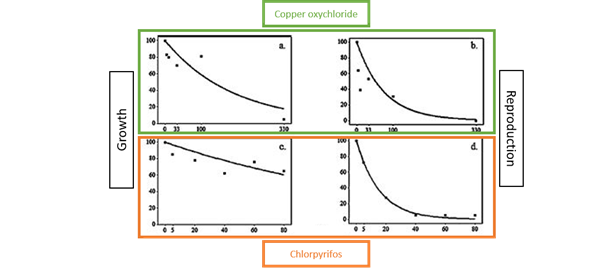Pesticides and the power of earthwormsby Orane Becheler
Published by the May 10, 2019 on 6:04 PM
We know that our current high use of some pesticides is harmful for the environment. For example, the controversy begun several years ago (National Geographic News, 2013 and Actu Environnement, 2018), about the disappearance of bees and the use of pesticides. Many of us have heard about this. In this context, assessing a priori the impacts of pesticides on environment can be helpful. This is why, five UK scientists have developed a model to anticipate the impacts of pesticides on the physiology of one species of earthworm, Eisenia fetida (A.S.A. Johnston and al., 2014).
Why is it important?
The impact of pesticides on the growth and the reproduction of earthworms can lead to a huge decrease of their density and maybe to their disappearance. However, these organisms are very important for the soil quality. They provide good aeration and mixing of soil (call bioturbation) making it easier to absorb and keep water. Moreover, they greatly contribute to the degradation of organic matter making it accessible to other organisms. Indeed, a study of Ontario Ministry of Agriculture, Food and Rural Affairs (OMAFRA, 2010) shows that, in a month, 1.5kg of earthworms (approximately 7,500 worms) can consume 30 days’ worth of a two-person household. In this way, plants growth better on a soil with earthworms than one without. This can be a great axis of reflexion about our way to produce vegetables. So, simulated impact of a pesticides on an area before destroy its ecosystem is a really good thing. Furthermore, we can see the importance of earthworms through their utilisation to evaluate the biodiversity in a participatory protocol (OPVT).
In the video below, we can see the mix of soil by the earthworm’ displacements. Earthworms played a significant role in bioturbation.
How did they do it?
These five UK scientists built complex model, call an energy-budget driven ABM. It consists of an interlocking of two model types: a huge one, an ABM (Agent Based Model), which contain many simple energy budget models. The first one allows to model how the population will progress, in other words the population’s dynamic. The second type allows to model life cycle processes for each earthworm from specified local conditions. Maybe the following picture can help you to understand.

What did they found?
The main results are a decrease of growth and reproduction for the use of two pesticides.

Modelling dose-response curves of two pesticides on the growth and the reproduction of Eisenia fetida. Adapted from the article.
Pesticides tested in this study are copper oxychloride and chlorpyrifos. The first one is widely used as fungicide and repellent, is not biodegradable and is “toxic to mammals and most biodiversity” (IUPAC, 2018). The second one is a current insecticide, “moderately persistent in soil systems, […] is highly toxic to mammals, […] birds, fish[es], aquatic invertebrates and honey bees” and “is classified as a reproduction toxicant, an acetyl cholinesterase inhibitor and a neurotoxicant” (IUPAC, 2018). So, the use of these pesticides can have large consequences not only on earthworms’ populations and so modelling consequences on others species is great.
Another study, presented by the Institut National de la Recherche Agronomique (INRA, 2014), shows also a decrease of earthworm populations when the quantity of used pesticides increases and vice versa (Pelosi C. et al., 2013).
They have input local conditions of experimental data from literature. Their outputs fit great with the literature’s results, for non-toxic environments and for toxic ones, both individual life cycle processes and population dynamics.
What is good and what is not?
Their model seems extremely complete because they incorporate varying food availability, use three steps of life with different parameters, for the adult stage they consider each step of processes under different feeding conditions and they consider interactions between individuals.
In the ABM, they use a model landscape of 0.01 m2 patches of soil. It’s 10 cm2. I find this very small for a model which would simulate what it’s happening in the field. Moreover, further work is required to apply this approach to others species, maybe more ecologically relevant, and to implement the “heterogeneous distribution of chemicals in the soil and their degradation with time”. But this model can be useful to help to extrapolate data from laboratory to field or from species to species.

This post is licensed under a Creative Commons Attribution-ShareAlike 4.0 International License.





